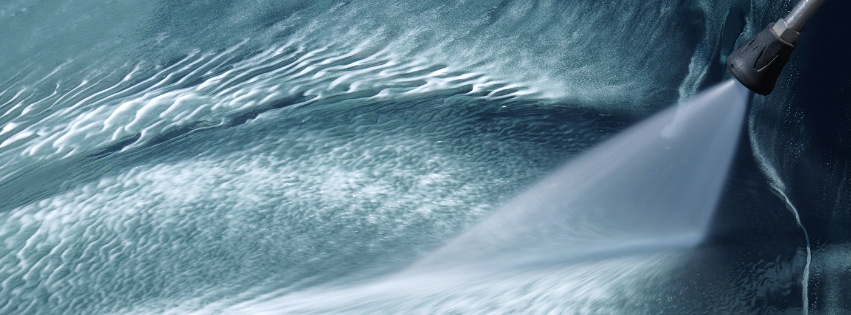Acid vs. Alkaline Cleaners: Which Is Best for Your Car Wash?
A closer look at where acid and alkaline car wash cleaners shine — their ideal applications, safe surfaces, and environmental impact.

In the world of car washing, not all soaps and chemicals are created equal. Two main categories dominate the cleaning game — acidic and alkaline cleaners. Each has its own chemistry, purpose, and effect on both vehicle surfaces and the environment. Understanding how they work helps you make smarter product choices, protect your customers’ vehicles, and reduce waste or runoff.
The Chemistry Behind the Clean
Every car wash chemical is designed to balance pH — the measure of how acidic or alkaline a solution is.
- Acidic cleaners have a pH below 7 and are designed to dissolve mineral deposits and metallic contaminants.
- Alkaline cleaners have a pH above 7 and specialize in breaking down organic materials like oils, grease, and road film.
Each type has its strengths, weaknesses, and ideal place in your car wash workflow. The trick is knowing when and how to use them together — or separately.
When to Use Acid Cleaners
Acid cleaners excel at removing inorganic contaminants — things that come from non-living sources, like metals or minerals. They’re especially effective against:
- Hard water stains and mineral buildup
- Rust and oxidation on wheels and trim
- Brake dust and metal fallout
- Acid rain etching and calcium deposits
Acids work by reacting chemically with these minerals, breaking them down into water-soluble forms that rinse away easily.
Common Applications:
- Wheel and tire cleaners to dissolve iron and brake dust
- Glass cleaners for spot removal
- Pre-soaks for vehicles with heavy mineral buildup
Safe Surfaces:
Use acid cleaners primarily on
chrome, glass, aluminum, and painted metal — but always in controlled concentrations. They should be
avoided on uncoated metals or porous materials that could corrode or discolor.
Environmental Considerations:
Strong acids can be hazardous if overused or improperly disposed of. Look for
biodegradable, buffered formulas that maintain effectiveness without harming wastewater systems. Many modern products neutralize themselves after use, reducing ecological impact.
When to Use Alkaline Cleaners
Alkaline cleaners, on the other hand, specialize in attacking organic grime — grease, oil, dirt, and bug residue. Their molecules break down fatty acids and emulsify oils, allowing water to rinse them away.
Common Applications:
- Pre-soak solutions for touchless or automatic washes
- Engine and undercarriage degreasers
- General-purpose soaps for vehicle exteriors
Safe Surfaces:
These are safe on
painted panels, plastics, rubber, and clear coats, especially when diluted properly. However, overly strong solutions can strip wax, sealant, or ceramic coatings — so moderation matters.
Environmental Considerations:
High-pH cleaners may affect pH balance in runoff water, so operators should ensure
proper wastewater neutralization systems. Choosing
eco-friendly alkaline formulas that biodegrade quickly helps meet local environmental compliance standards.
Two-Step Cleaning: The Best of Both Worlds
Many professional car washes use a two-step cleaning process — starting with an acid cleaner and finishing with an alkaline detergent.
- Step One – Acid Pre-Soak: Removes mineral deposits and loosens inorganic films.
- Step Two – Alkaline Wash: Cuts through organic grime and road film.
This balanced approach maximizes cleaning efficiency and prevents surface damage. The acid neutralizes the alkaline residue and vice versa, leaving behind a chemically neutral surface that’s easier to rinse and dry.
This process is ideal for touchless systems, where mechanical agitation is limited and chemistry does the heavy lifting.
Environmental Impacts: Balancing Power and Responsibility
Both acid and alkaline cleaners can be environmentally safe — or harmful — depending on their formulation and disposal. Here’s what to consider:
- Biodegradability: Choose products certified as biodegradable and free of phosphates or harsh solvents.
- Dilution Control: Overconcentration wastes product and increases wastewater toxicity. Automatic dilution systems ensure consistency and safety.
- Neutralization: pH-neutral runoff protects local water systems and complies with environmental regulations.
- Recycling Wash Water: Installing a water reclaim system can reduce chemical discharge and save operational costs.
With modern advancements, many professional-grade products from Car Wash Management and Car Wash Laboratories are formulated to deliver superior results with minimal environmental footprint.
Which One Is Best?
The right choice depends on your cleaning goals, vehicle types, and wash setup:
- Use acidic cleaners for wheels, glass, and mineral-heavy grime.
- Use alkaline cleaners for oil, dirt, and organic residue.
- Use both in sequence for the most thorough clean — ideal for high-volume, touchless, or automatic systems.
No single chemical can do it all. The key is to understand your water quality, surface types, and customer expectations. Science helps you make that choice smartly and safely.
The Bottom Line
Choosing between acid and alkaline cleaners isn’t a matter of which one is “better,” but which one works best for the job at hand. Each plays a vital role in creating that showroom finish customers love — while balancing performance, safety, and environmental care.
By understanding the chemistry and responsible usage of these cleaners, you’re not just washing cars — you’re preserving their shine and protecting the planet at the same time.
For more insights on effective car wash chemistry and sustainable cleaning solutions, visit Car Wash Management or explore eco-conscious products from Car Wash Laboratories.
